Rush Lake Water Sampling Project
Here is a short video about the Rush City High School Intro. to Environmental Science class, led by instructor, Eric Telander, testing the water quality entering Rush Lake. The project was funded by a $500 RLIA grant.
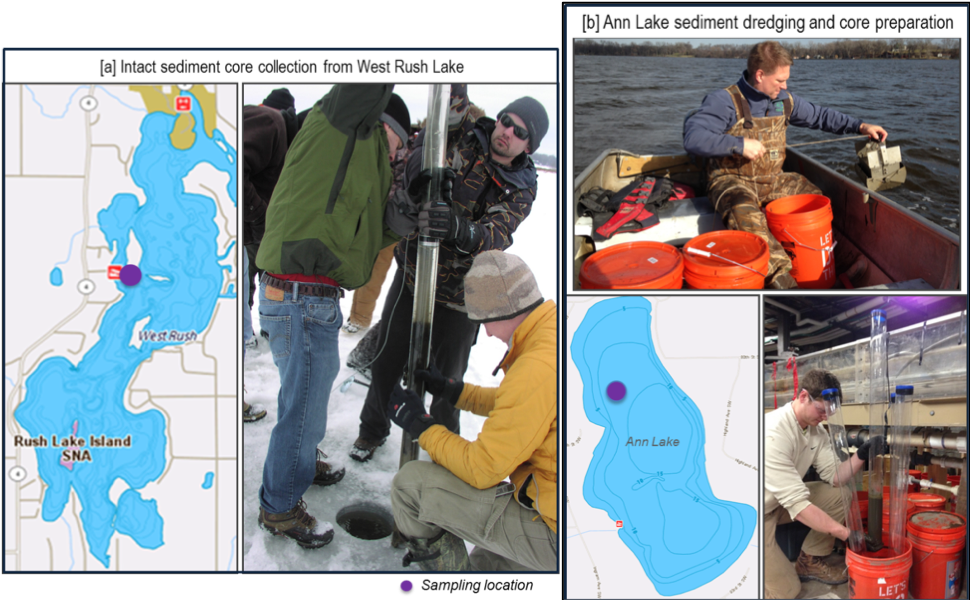
Rush Lake Iron Filings Project Summary Report. For a summary report on research conducted in both East and West Rush Lake, follow this link: http://stormwater.safl.umn.edu/updates-newsletters/updates-february-2018
Water Quality Improvement
The primary emphasis in improving our lakes’ water quality is reducing the level of phosphors and other harmful chemicals coming into the lake and that which is already residing in the lake. The RLIA has inititated and is conducting a number of programs including:
Inflow Water Management
At this time, a top priority for the RLIA is to reduce the Phosphorus that flows into Rush Lake from the neighboring agricultural fields. Volunteers from the RLIA sampled 13 streams in 2009 and 2010 and one in particular, appears to produce substantially more Phosphorus (that flows into East Rush Lake) than the others. The RLIA intends to work with the PICKM Alliance [a 5 County Alliance whose purpose it is to improve water quality in those 5 Counties] to develop and implement a plan to reduce the flow of Phosphorus into Rush Lake without any cost to the involved farmer.
Iron Concentrate Program
Volunteers from the RLIA installed Iron Concentrate through the ice on Feb. 26, 2011 and, at the request of the MPCA via “open water”, in 2012 on the dates of: July 26; September 5; and September 13. The goal of this program is to “sequester” Phosphorus that is present in the lake sediment from the many years of Phosphorus use as fertilizer in the fields that neighbor Rush Lake.
Aquatic Plant and Invasive Species Mitigation & CLPW Control
One of the important projects done every year is to reduce the interference of Curlyleaf Pond Weed (CLPW) on those parts of the lake that are common “traffic areas” for the water craft that use East and West Rush Lake. The spraying for CLPW is usually done in early May, when the water temperature is greater than 50 degrees F.
Rough Fish Efforts
A number of years ago, the RLIA removed about 1,000,000 carp from East and West Rush Lake and the RLIA has decided to use recently developed technology (Sorenson, UMN) to determine if we have an excess density of carp that should be removed from the two lake basins.
Water Hazard Buoys
The RLIA annually places the buoys in East and West Rush to mark shallow and hazardous waters to ensure the safety of our boating residents and visitors. To download a pdf map showing buoy locations, CLICK HERE.
Monofilament Recycling Program
Monofilament fishing line left in the lake presents a very real danger to fish, birds, animals, people and propellers. RLIA placed monofilament recycling containers at each boat launch. Too much trash was being placed into the monofilament recycling containers so the program was cancelled.
Winter Lake Clean-Up
The RLIA coordinates a huge volunteer effort each year, typically in early March before ice-out, to clean up the debris that ice fisherpersons have unfortunately left on the ice. This is important work because failure to remove literally hundreds of pounds of trash, leftover/broken items and even bags of feces will go into our waters when the ice goes out. We also work to inform lake visitors of the need to clean up after themselves as this benefits all who live on or visit the lake.
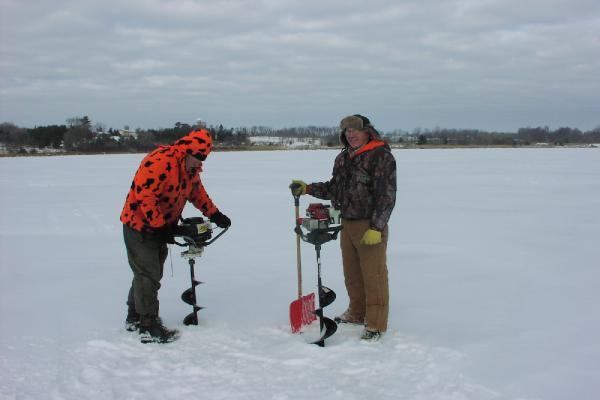
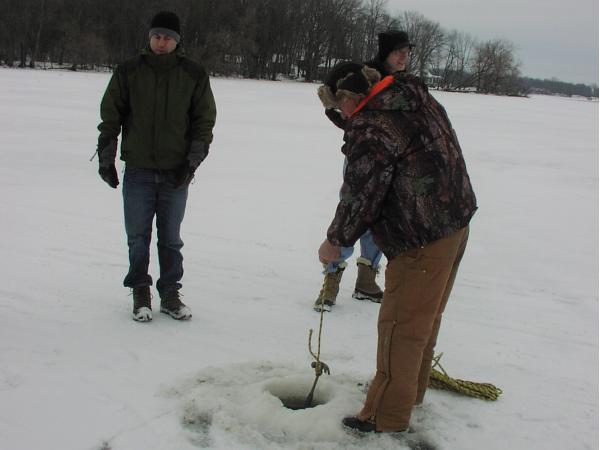
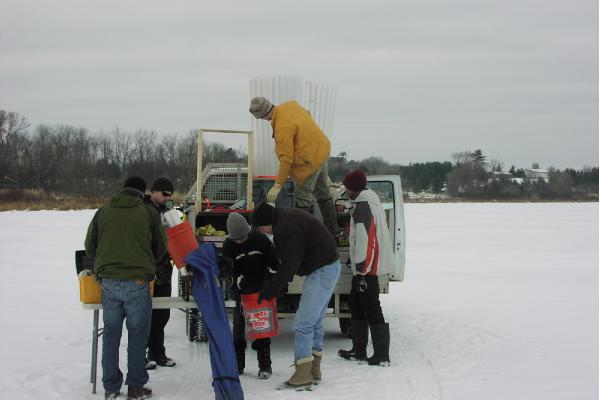
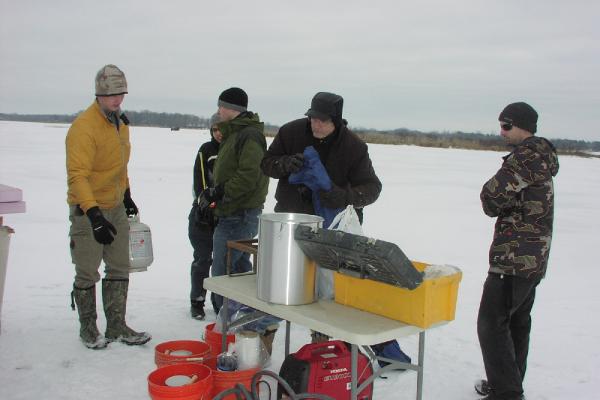
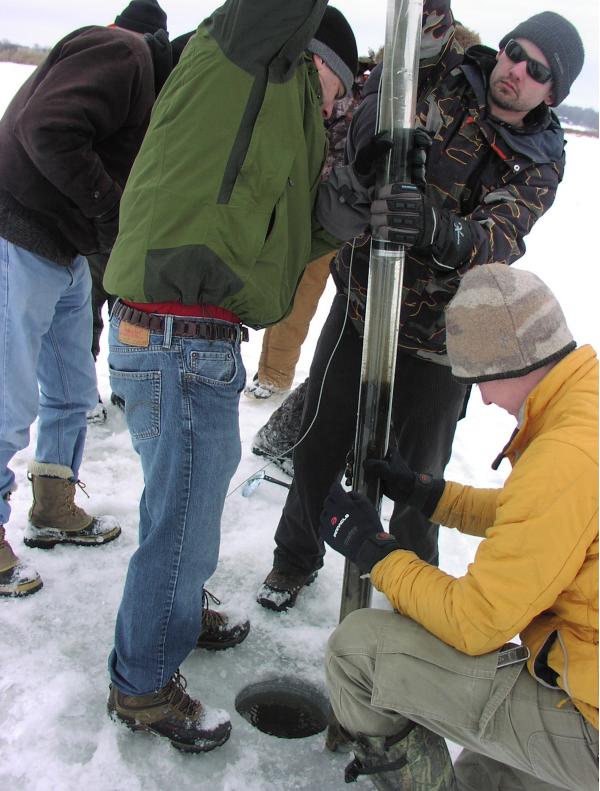
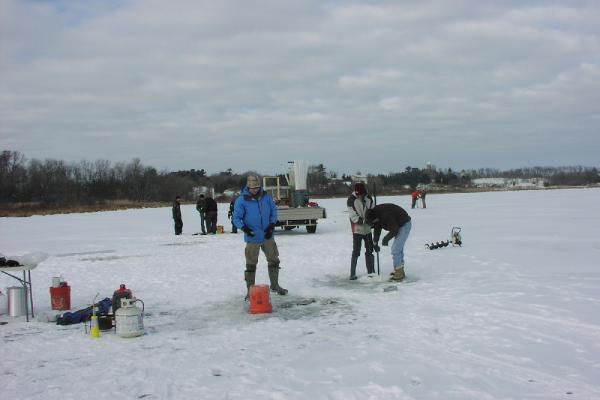
Rush Lake is Trying to Reduce Internal Loading of Phosphorus
On Thursday January 15, 2015, John Gulliver and Bill Arnold came out to West Rush Lake and collected 50 samples through the ice. The RLIA drilled the holes and Gulliver/Arnold collected the samples in plastic tubes about 6 feet long and 3 inches in diameter. They had three graduate students helping and an experienced assistant for a total of 6 people from the Univ. of Minn.
Rush Lake Improvement Association [RLIA] is working with John Gulliver and Bill Arnold, Professors of Civil Engineering at the University of Minnesota, on a 3-year grant awarded in July of 2014. The grant is provided by the MN Pollution Control Agency [MPCA] and will evaluate the effectiveness of Iron Concentrate to sequester Phosphorus and also the competition between Iron Concentrate and the sulfate ion.
Here’s a few items RLIA done in the past:
- Ultraviolet fly over for pollution
- Stream monitoring
- Fireworks
- Talking to Farmers for proper buffer zones
- Iron Fillings
- Carp Removal
- Buck Thorn removal on Bird Island
- Channel Dredging/rip rapping channel
- Channel Maintenance
- Weed Spraying
- Lake cleanup with dumpsters at landings
- Fundraising pull tabs
- Spaghetti dinners with silent auctions
- Buoy installation and removal
- New buoys as needed
- New lights on buoys
- Donations to Let’s Go Fishing
- Donations to food shelves
- Donations to sober cab
- Scholarship fund
- Donated boat motor and trailer to water patrol
- $200 towards shore weed control
- Donated a pontoon for lake maintenance
- Annual Meeting
- Christmas Party